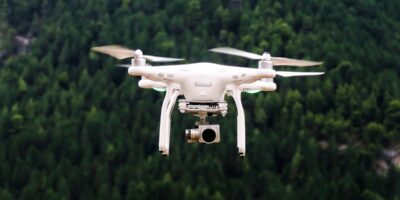Boeing 737-800 vs 737 MAX 8: A Comprehensive Comparison
The Boeing 737 series is one of the most popular narrow-body aircraft families in aviation history. Among its widely recognized models are the 737-800 and the 737 MAX 8. Each has distinct features and capabilities tailored to specific operational needs. Understanding these differences provides valuable insights into modern commercial aviation.

Development and History
The 737-800, part of the Next Generation (NG) series, entered service in the late 1990s. It was developed to replace older 737 variants, offering improved fuel efficiency, passenger capacity, and reliability. The NG series became a staple for many airlines globally due to its versatility and performance across various routes.
The 737 MAX 8 is a more recent addition, launched by Boeing in 2017 as part of the 737 MAX series. This series was designed to address rising fuel prices and environmental concerns, offering significant improvements in fuel efficiency and range over its predecessors. Despite initial setbacks and grounding due to safety issues, the MAX 8 has been reintroduced with comprehensive updates.
Technical Specifications
- Dimensions: The 737-800 measures about 39.5 meters in length with a wingspan of 35.8 meters. The 737 MAX 8 is slightly longer at 39.5 meters but has a wider wingspan due to its Advanced Technology winglets, measuring 35.9 meters.
- Capacity: Both aircraft typically seat between 160 to 189 passengers in a two-class configuration, though the MAX 8 can offer slightly higher seating density due to redesigned cabin interiors.
- Range: The 737-800 has a maximum range of approximately 5,700 kilometers. In contrast, the 737 MAX 8 extends this range to about 6,570 kilometers, making it more suitable for longer routes without the need for refueling.
- Engines: The 737-800 is powered by CFM56-7B engines, known for their reliability. The MAX 8 uses CFM International LEAP-1B engines, which are quieter, more fuel-efficient, and produce fewer emissions.
Performance and Efficiency
Fuel efficiency is one of the compelling reasons airlines consider the 737 MAX 8. The LEAP-1B engines contribute to a 14% reduction in fuel consumption compared to the 737-800. This efficiency translates to lower operational costs and reduced environmental impact. Enhanced aerodynamics also play a vital role, with the MAX 8 benefiting from improved wing design and engines placed higher and further forward on the wing.
Operational reliability remains high for both aircraft. The 737-800, with years of service, has an extensive track record for performance and dependability. The MAX 8, despite its early challenges, is designed with modern avionics and systems that enhance its functionality and operational efficiency.
Cabin and Passenger Experience
The passenger experience differs notably between these two models. The 737-800 offers a familiar cabin setup but may lack some of the modern amenities found in newer aircraft. In contrast, the 737 MAX 8 features Boeing’s Sky Interior, providing improved LED lighting, larger overhead bins, and quieter cabins. These enhancements contribute to a more enjoyable flight experience.
The MAX series cabin offers improved humidity and lower cabin altitude, aiming to contribute to passenger comfort during longer flights. Advanced entertainment systems and connectivity options are also more prevalent, catering to modern passenger expectations.
Operational Considerations
From an airline’s perspective, choosing between the 737-800 and the 737 MAX 8 involves weighing operational needs and market demands. The MAX 8’s extended range and fuel efficiency make it a popular choice for new routes and airlines targeting fuel savings. However, the 737-800’s proven performance ensures its continued relevance in short to medium-haul routes.
Both models offer commonality in training and maintenance, which is beneficial for airlines operating mixed fleets. The MAX model features updated avionics but maintains enough similarity to ease the transition for pilots and maintenance crews.
Safety Enhancements
Safety remains a priority for both models. The 737-800 has established itself with rigorous safety performance data over decades of service. The 737 MAX 8, following its grounding, underwent comprehensive software updates and revisions to its Maneuvering Characteristics Augmentation System (MCAS) to address earlier concerns. These changes, alongside rigorous testing, aim to ensure its safety moving forward.
Conclusion
The competition between the Boeing 737-800 and 737 MAX 8 reflects the evolution of modern aviation needs. Each aircraft has its strengths, offering advantages in performance, efficiency, and passenger comfort. For airlines, the decision often hinges on specific route requirements, fuel savings targets, and fleet strategy. Understanding the nuances between these models helps illustrate the steps aviation technology has taken to adapt and anticipate future challenges.




Subscribe for Updates
Get the latest articles delivered to your inbox.
We respect your privacy. Unsubscribe anytime.